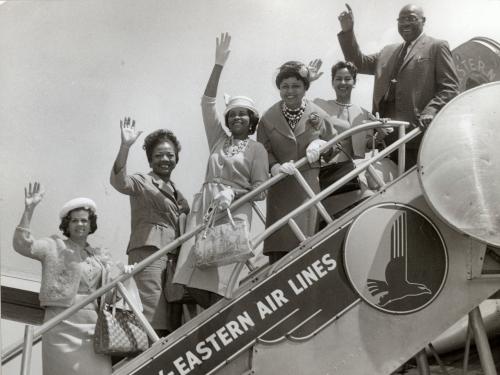







The Beechcraft Model 18 made its first demonstration flight in 1937 and production continued for an impressive thirty-two years, with move than 9,000 aircraft built. The low-wing, all-metal, twin-engine monoplane was originally intended as a six-to-eight passenger executive or feeder airline transport, but eventually thirty-two versions were built. The highly adaptable design became a mail plane, a utility aircraft, and a distance and speed record breaker. Military versions included personnel transport, photo reconnaissance, and trainers for navigators and bombardiers.
The success of the Beech 18 ensured the success of Beech Aircraft Corporation throughout the 1940s. Beech introduced the D-18S model in October 1945, with structural modifications for increased payload and new engines and landing gear. Mike Mitchell operated N522B as an air ambulance for fifteen years, flying it a million and one-quarter miles and transporting nearly fifteen thousand patients.
This object is on display in Commercial Aviation at the Steven F. Udvar-Hazy Center in Chantilly, VA.
1937-1969
United States of America
CRAFT-Aircraft
Beech Aircraft Corporation
N522B. Twin-engine business, feeder airline, and military transport monoplane. Two Pratt & Whitney Wasp, Jr. engines. Six passengers, two crew members. Low-wing, tailwheel design.
Wingspan: 14.5 m (47 ft)
Length: 10.4 m (33 ft 11 in)
Height: 2.8 m (9 ft 2 in)
Weight, empty: 2,584 kg (5,697 lb)
Weight, gross: 3,967 kg (8,750 lb)
Engine: Pratt & Whitney Wasp, Jr. 450 hp (2)
Fuselage and wings: all-metal
A19761792000
Gift of Mr. and Mrs. Mike Mitchell
National Air and Space Museum
Open Access (CCO)
For more information, visit the Smithsonians Terms of Use.